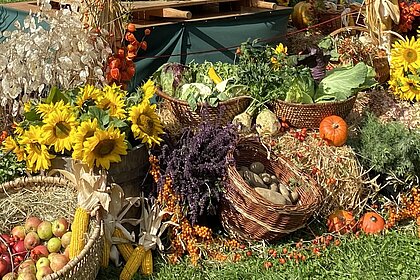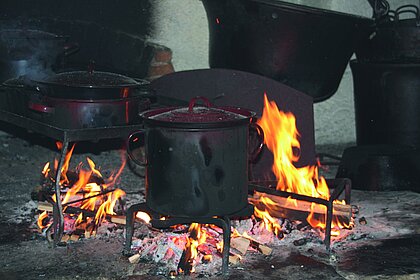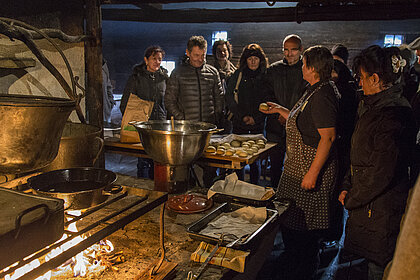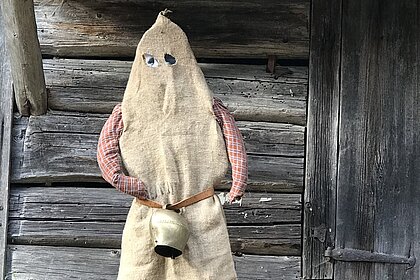Autumn has a special magic. A special tribute is paid to nature during this colourful season. Harvest time takes centre stage and many customs are based on the weather when stormy times begin and supposed spirits move in. Being thankful for the harvest and connecting in a positive way to be well prepared for the cold and often difficult season.
Customs and traditions in autumn
The time of harvest

Image Credits
Harvest festival
The full barns, cellars and chambers in autumn gave cause for thanks and celebration. Over the course of time, the harvest festival was brought out of the domestic sphere into the public sphere and moulded as a custom at the end of work. While today the harvest crown or a harvest wreath made from corncobs, ears of corn, fruit or crops is carried in a procession, in earlier times the festival was divided into three parts. The end of the harvest consisted of the presentation of a harvest wreath, in some places also a crown, to the lord of the manor, the harvest meal and the subsequent reaper's dance. The harvest wreath was made from the longest and most beautiful stalks and decorated with ribbons. Once the cutting was complete, it was left standing in the field or hung on the corn stacks once the harvest had been brought in. The harvest feast, also known as the ‘Schnitthahn’ or ‘Saathenne’, took place in the house of the farmer or landowner, who served a sumptuous meal as thanks. The subsequent reaper's dance was opened by the father of the house with the maid or a stuffed doll made of ears of corn and decorated with ribbons. This was followed by general dancing, various games and races.

Image Credits
Ruabfeldln or Ruamfeldln
The "Raffelmess" in Gößl am Grundlsee (Styrian Salzkammergut) is celebrated on the last Sunday in October in honour of the Archangel Raphael. After mass, the children cook the regional dish "Esch(d)bohnkoch", a potato stew, often with sausages, for their parents at a fireplace. "Schnapstee" (tea with alcohol) is served and the whole thing is accompanied by music. The custom of "Ruabfeldln" has a long tradition and probably originated because there was no lunch break during the beet harvest due to the weather conditions. Instead, the children cooked for their parents. There are various explanations about the origins of this custom: one says that farmhands and maidservants received turnips and Schnaps from the farmer after the harvest. Another version says that children and poor people searched the fields for leftover turnips and were allowed to roast them on the spot. A special element of this tradition is the "Teebeutelschupfen" (tea bag throwing), where the children throw used tea bags against a rock face to make them stick. The custom is still practised today by village children whose parents own land.

Image Credits
Martiniloben
On St Martin's Day, which is celebrated every year on 11 November, a sumptuous feast traditionally played a central role. This feast, known as "Martiniloben", brought people together to celebrate the day in style. In particular, the legend of St Martin was recalled, which tells of his modesty and his attempt to avoid being elected bishop. According to tradition, Martin hid in a stable of geese, but the geese betrayed him with their loud chattering, which is why he was eventually appointed bishop after all. For this reason, geese had a special symbolic significance and eating geese or other poultry played a central role on this day. The goose dinner also coincided with the final phase of goose fattening, so that the birds were particularly well-fed and suitable for the feast. Even today, the so-called "Martin's goose dinner" is widespread and a popular tradition in many places. Families and friends gather to enjoy roast goose together and continue the old customs associated with St Martin. This tradition combines culinary enjoyment with historical and religious heritage.

Image Credits
Kasmandln
According to old tradition, both people and cattle had to have left the mountain pastures by St Martin's Day, which is celebrated on 11 November. They only returned on St George's Day, 24 April, to start the new alpine season. In the meantime, it was believed that ghosts and mystical beings moved into the abandoned mountain huts and wreaked havoc there. In Salzburg and the upper Enns Valley in particular, these spirits were known by various names, including "Kasmandln", "Hüttenwaberl" or "Winterschwoagerin". These spirits were said to inhabit the mountain huts during the cold winter months. To make the spirits merciful and avert their misfortune, leftovers were often left in the huts as winter provisions for them. It was a sign of respect and served to appease these supernatural inhabitants. This time also offered special customs for children. In some areas, they dressed up as dairymaids, herdsmen or cattle and travelled from house to house. They recited sayings, often as thanks for small gifts given to them by the inhabitants of the house. In some places, the children simply wore a sack with eyeholes over their heads to imitate a mystical figure and remind them of the old traditions. In this way, the connection to the legendary alpine spirits remained alive.



















